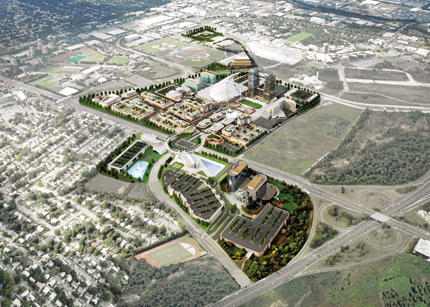Fenceline
In the most recent issue of the Architect’s Newspaper (quickly becoming the most relevant mag for the New York design set), Jeff Byles gives an excellent overview of an underappreciated topic: the suburbs.
Since WWII, we have been moving out from the city and in from the country to create an ever expanding landscape of single family homes, cul-de-sacs, manicured lawns, and our own sense of personal kingdoms. The result? Architectural homogeneity at the cost of cultural alienation. More vehicle drive time. Ballooning house sizes. Cable TV packages to keep us entertained. Mapos respects the American ideal of home ownership, but at what cost? To compound the issue, architecture and design schools are still training us in the classical “urban” design model, ignoring the fact that more Americans today are living in suburbs than in rural and urban areas. Byles points to a handful of design projects in the pioneering suburbs of Long Island that shine a light on the need to take suburban development as a serious and necessary pursuit. But using the Big Idea ethic of mid-century urban planning in low density suburbia only exacerbates the problem. Master planning 17 acre brownfield sites is a a good step, but as currently imagined, the Hedgehog is still ruling the roost. These projects are almost all large scale, singular, insular, urban islands within the rising sea of sprawl.

Densification will help create walkable communities, for sure, but to effectively address this very significant planning typology, we need to look at the scale of the metropolitan region. Transportation links. Neighborhood connections. County-wide zoning regulations. Even cross-state commuting patterns. Let’s start by creating infill within the existing slivers throughout suburbia and constantly seek out opportunities to make connections through the inherent gaps in our picket fences.